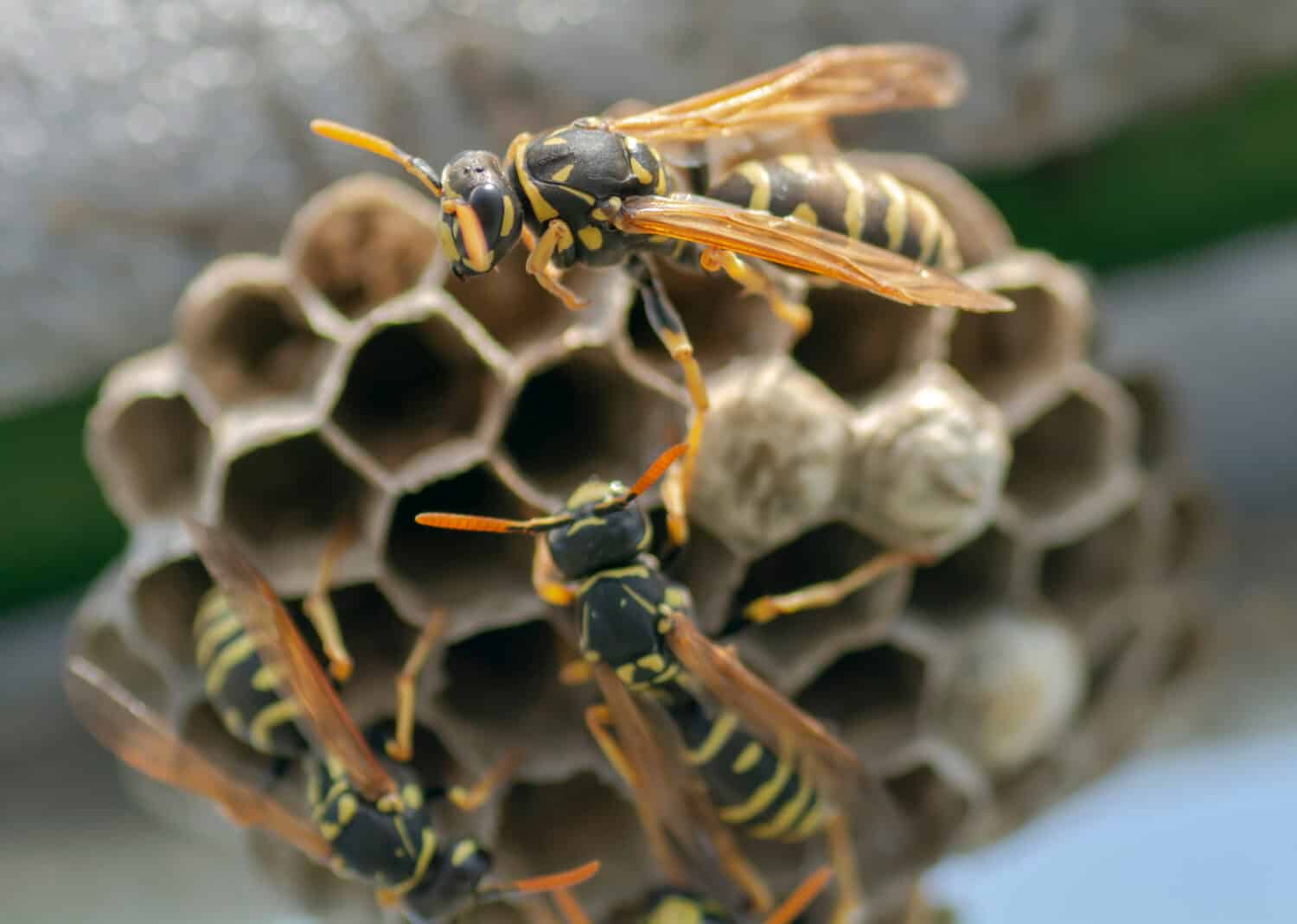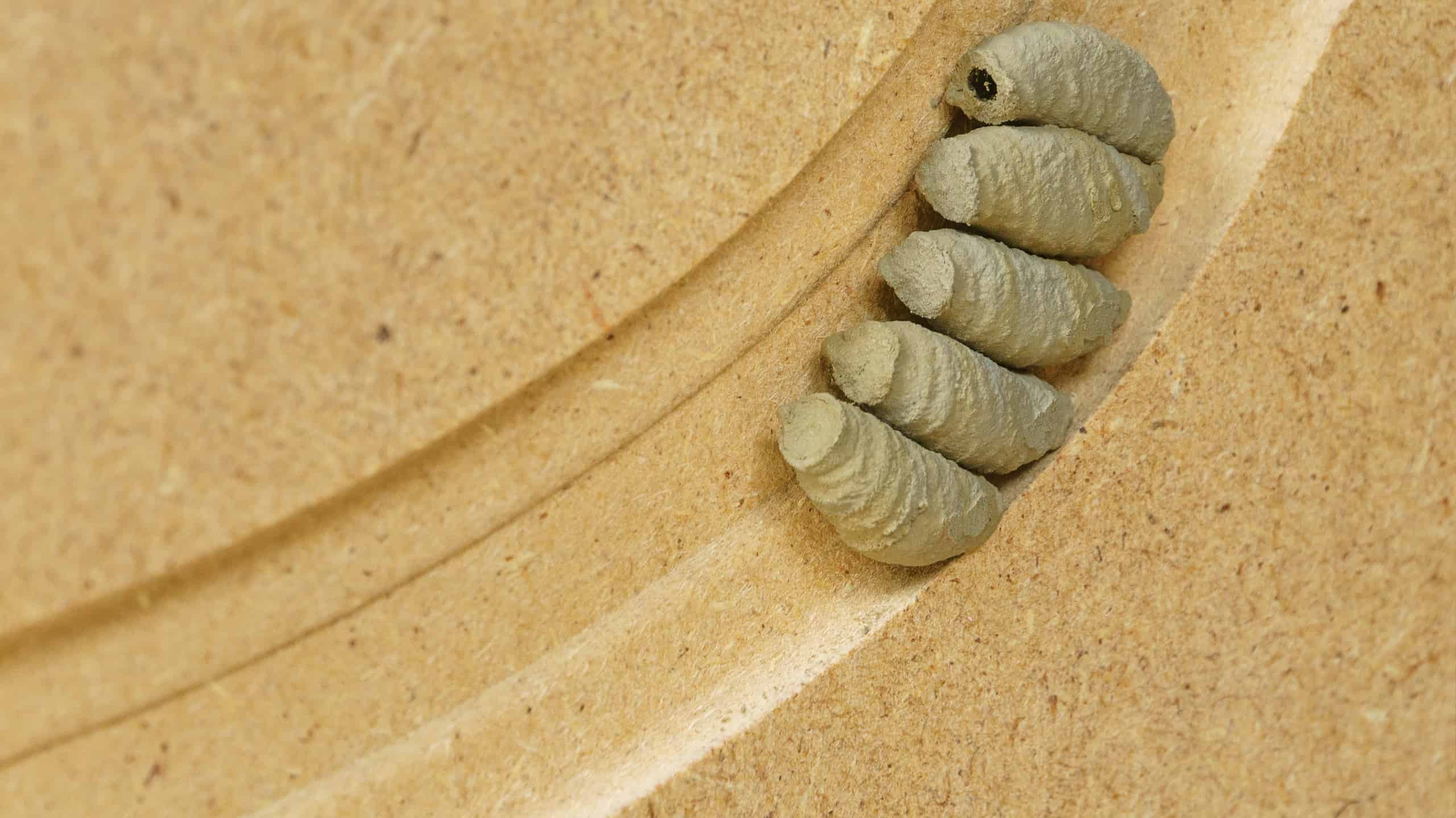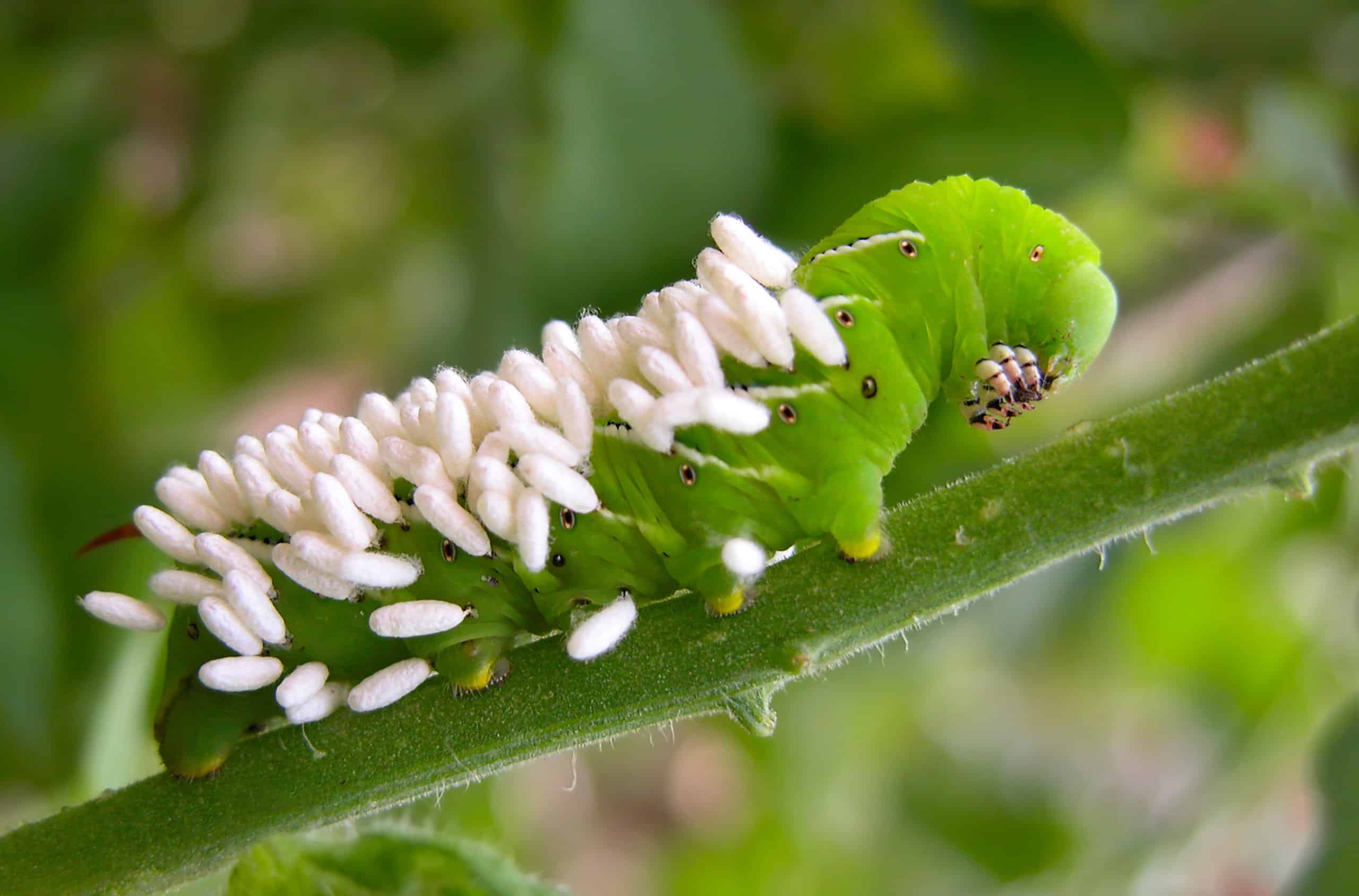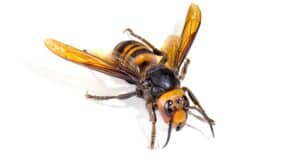Wasps are a type of flying insect that are easily recognized by their long, slender bodies. Researchers have identified nearly 100,000 species of wasps that inhabit every continent except Antarctica. Many wasps are solitary, although some species live in colonies with up to 10,000 members. But what about baby wasps? Keep reading to see 5 pictures and learn 5 incredible baby wasp facts.
5. Baby Wasps Hatch After Just a Few Days

A wasp colony’s queen can lay around 400 eggs at a time.
©Stefan_Sutka/Shutterstock.com
Most worker wasps have a life span that ranges from 12-22 days. However, the queen of a wasp colony can live for a year or more. The life cycle of a wasp has four distinct stages: egg, larva, pupa, and adult.
Wasp eggs are produced by the colony’s queen, which begins to lay eggs following the winter season hibernation. During the autumn, the queen saves sperm from male wasps after mating, which she uses to individually fertilize each egg the following spring. This stage of a wasp’s life lasts for about 5-8 days.
After hatching, wasps remain as larvae for about 15 days and are dependent on the queen to feed them. During this time, baby wasps spin a silk cover for their nest cell to prepare for pupation, which is the final stage of development before emerging as adult wasps.
4. Baby Wasps Do Not Sting

Some species of wasps create mud tubes to lay their eggs.
©Marinodenisenko/Shutterstock.com
Baby wasps lack the ability to sting until they are fully mature adults — and even then, only female wasps develop stingers. As larvae and pupae, baby wasps remain in their nest cells and are provided with food and protection. Once they emerge as adults, it takes a few days for them to develop their stinging organs.
3. Baby Wasps Can Help Your Tomatoes

The white oblong sacs often visible on tomato hornworms are baby wasp cocoons.
©Stephen Bonk/Shutterstock.com
Although wasps are often considered pests, to a tomato farmer, they can be a welcome sight. Tomato hornworms are large green caterpillars that can easily strip the fruit and leaves from a tomato plant.
Thankfully for gardeners, some species of parasitic wasps lay their eggs under the skin of tomato hornworms. The larvae hatch and consume the hornworm’s insides. They emerge from the hornworm and spin white silk cocoons for pupation. When the wasps finally complete their development, they leave the cocoons, killing the weakened hornworm.
2. Baby Wasps Are Vulnerable to Predators

The queen lays one wasp egg per cell.
©Brian Fish - Public Domain
Stinging is a wasp’s primary mechanism for defense and hunting. Unlike bees, wasps can sting their victims repeatedly without dying, making them effective hunters.
Without a stinger, baby wasps are vulnerable to predators during their egg, larva, and pupa stages. Other insects, including beetles, moths, dragonflies, and centipedes will eat developing wasps. Baby wasps are also vulnerable to birds, toads, mice, and black bears.
1. Some Wasps Are Born Inside Figs

Fig trees and fig wasps have a mutually beneficial relationship.
©Nic Pasquini/Shutterstock.com
Fig wasps play an important role as pollinators for fig trees. Unlike other fruit-producing trees, fig-trees lack visible flowers. Instead, when they’re ready for pollination, fig trees emit an aroma that attracts a particular species of wasp.
The female wasps dig their way through the fig — which is an inflorescence rather than a fruit — to find its tiny, hidden flowers. The wasp lays its eggs inside the flowers, spreading their pollen as it moves. The wasps hatch and eat the fig seeds as they grow. The male wasps spend their entire lifecycle inside the fig. After reaching maturity, they mate with emerging female wasps and then die. The females leave the fig prepared to find a new tree to lay their eggs.
The photo featured at the top of this post is © Stefan_Sutka/Shutterstock.com
Thank you for reading! Have some feedback for us? Contact the AZ Animals editorial team.






